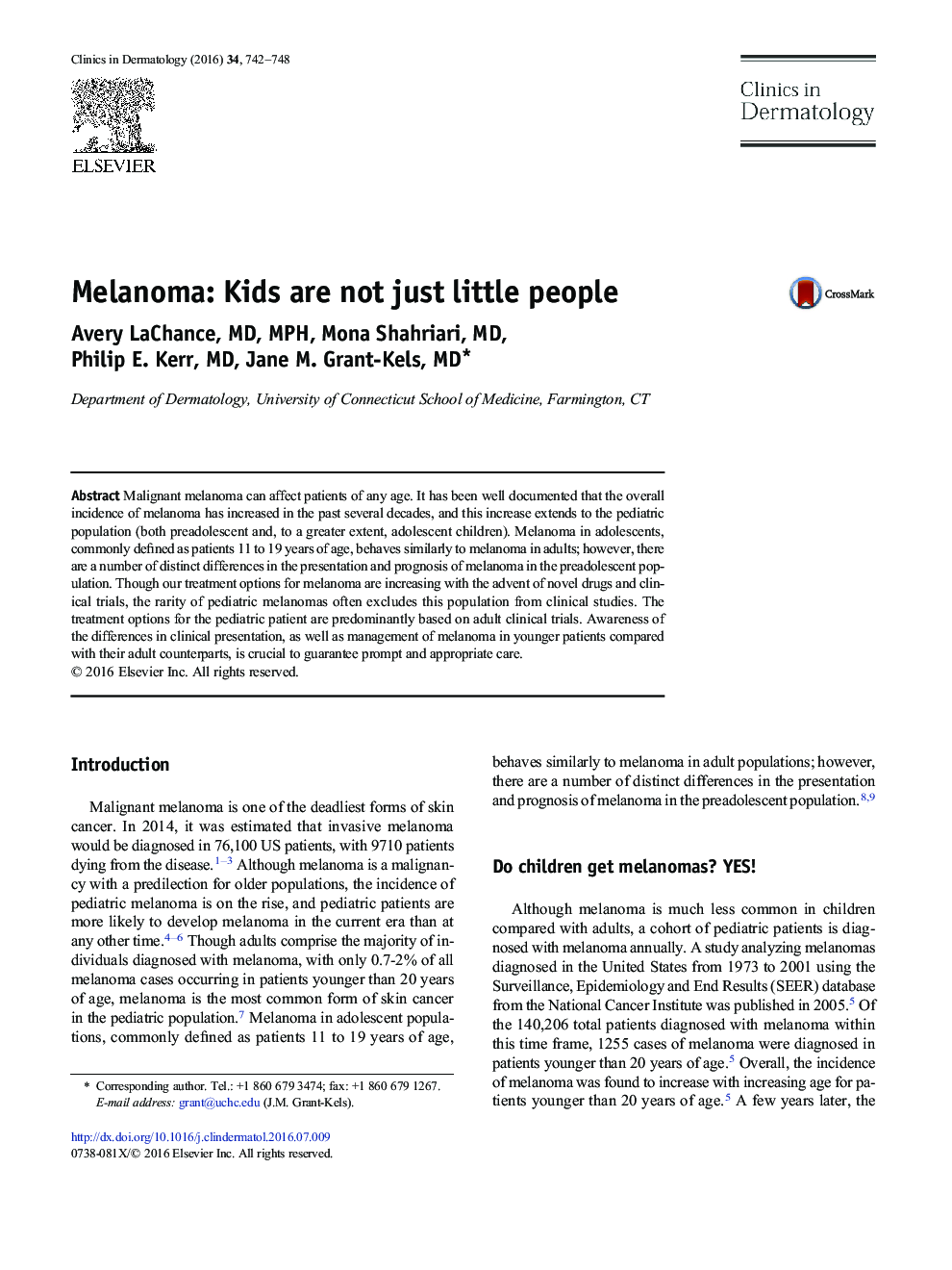| Article ID | Journal | Published Year | Pages | File Type |
|---|---|---|---|---|
| 5645723 | Clinics in Dermatology | 2016 | 7 Pages |
Malignant melanoma can affect patients of any age. It has been well documented that the overall incidence of melanoma has increased in the past several decades, and this increase extends to the pediatric population (both preadolescent and, to a greater extent, adolescent children). Melanoma in adolescents, commonly defined as patients 11 to 19 years of age, behaves similarly to melanoma in adults; however, there are a number of distinct differences in the presentation and prognosis of melanoma in the preadolescent population. Though our treatment options for melanoma are increasing with the advent of novel drugs and clinical trials, the rarity of pediatric melanomas often excludes this population from clinical studies. The treatment options for the pediatric patient are predominantly based on adult clinical trials. Awareness of the differences in clinical presentation, as well as management of melanoma in younger patients compared with their adult counterparts, is crucial to guarantee prompt and appropriate care.
